- Home
- /
- Artificial Intelligence
- /
- India’s Breakthrough in Chip Design:…
Introduction: A New Dawn for Indian Silicon
For decades, the global semiconductor stage has been dominated by a few key players. The chips that power our world, from smartphones to data centers, have largely been designed and manufactured in a handful of countries. But a quiet revolution is brewing, and its latest milestone comes from India. Meet the ARKA GKT-1, the nation’s first homegrown, energy-efficient “edge” silicon chip, a tiny piece of technology with colossal implications.
This isn’t just another processor; it’s a specialized tool designed for a specific, futuristic purpose: to bring artificial intelligence to the farthest reaches of our technological ecosystem, all while sipping power rather than guzzling it. Let’s unpack what the ARKA GKT-1 truly represents for India and the world of tech.
What Exactly is the ARKA GKT-1 Chip?

At its core, the ARKA GKT-1 is an intelligent System on a Chip (SoC) built for edge computing scenarios where power is limited, but intelligence is crucial. Edge AI means processing data right where it’s generated, like in a remote sensor, a smart meter, and internet of things (IoT) gadgets, rather than sending everything to distant servers. This reduces latency, boosts privacy, and cuts energy use dramatically.
The chip leans on Azimuth AI’s “Software-Defined Silicon” approach. This makes the hardware flexible and updatable through software, much like how smartphones get new features via updates. Cyient Semiconductors brought their strength in mixed-signal design (blending analog and digital circuits) and low-power ASICs to the table, handling everything from concept to fabrication and testing.
While exact specs like clock speeds or transistor counts haven’t been fully disclosed yet, reports highlight its ultra-low power profile. It’s tailored for environments where every microwatt counts, enabling real-time decision-making in power-constrained setups.
| Feature | Details |
|---|---|
| Core Function | A highly integrated, energy-efficient system-on-chip designed for edge AI and smart energy applications |
| Computing | Multi-core custom compute engines built for real-time AI workloads |
| Analog Sensing | Advanced mixed-signal sensing for accurate real-world measurements |
| Memory | On-chip memory tightly coupled to compute units for low-latency processing |
| Power Management | Intelligent power optimization that reduces energy use during operation |
| Purpose | Designed for smart utilities, battery management, industrial IoT, and smart city deployments |
The Core Innovation: Power Efficiency Meets AI

The buzzwords “high performance” often steal the spotlight, but in the world of edge computing, “power efficiency” is the true hero. The ARKA GKT-1 is engineered specifically for this reality.
Key features that set it apart
- Dual Core Processing: It integrates two powerful ARM Cortex A55 cores, handling general computing tasks with ease.
- Integrated AI Acceleration: This is its secret weapon. The chip boasts a dedicated Neural Processing Unit (NPU). This means it can run AI models locally, on the device itself, without needing a constant, bandwidth-heavy connection to the cloud.
- Intelligent Power Management: The chip is designed with a “smart” power management unit that can dynamically adjust energy consumption based on the task at hand. When idle or performing simple operations, it draws minimal power, extending battery life for remote devices.
- Built for the Real World: It includes support for various interfaces like PCIe, USB, and Ethernet, making it versatile enough to be integrated into a wide array of products and industrial systems.
| Component / Concept | Explanation |
|---|---|
| Software-Defined Silicon Architecture | Flexible architecture by Azimuth AI that allows the chip to adapt to different workloads without relying on fixed-function hardware |
| Mixed-Signal Integration | Combines analog and digital processing to capture and interpret sensor data accurately and efficiently |
| Custom ASIC Approach | A fully custom application-specific integrated circuit designed end-to-end for energy and AI use cases |
| Turnkey Chip Development | Cyient managed the full lifecycle: design, validation, fabrication, and OSAT for production readiness |
| Edge AI Capability | On-chip intelligence enables decisions at the edge, reducing latency and cloud dependence |
| Low Energy Design | Emphasis on minimal power consumption for battery-powered and grid-sensitive environments |
Why This Chip is a Game Changer for India
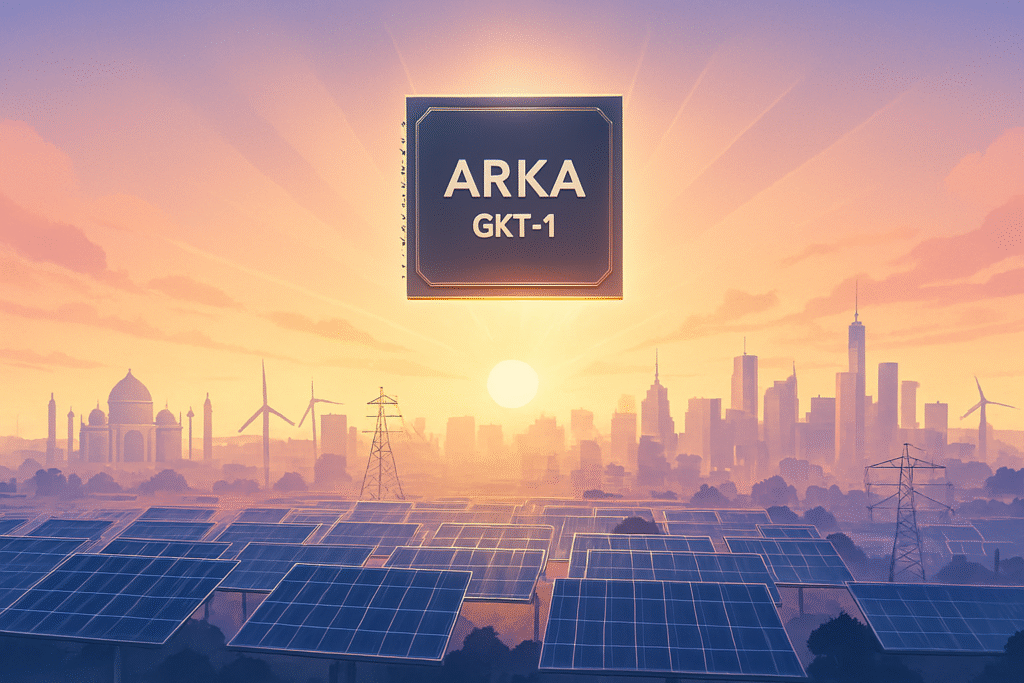
The launch of the ARKA GKT-1 is more than a product release; it’s a strategic leap forward.
Strategic Sovereignty
In an era of global supply chain uncertainties, developing domestic capability in semiconductor design is a national priority. The GKt 1 proves that Indian engineers can design complex, competitive silicon from the ground up, reducing reliance on imports for critical technologies.
Fueling the “Make in India” Vision
This chip is a foundational component. It can be used in devices made by Indian companies for Indian solutions, be it in smart agriculture, water management, infrastructure monitoring, or defense. It empowers local innovation.
A Niche Masterstroke
Instead of trying to compete directly with giants like Intel or AMD in the CPU market, Azimuth AI has smartly targeted the high-growth edge AI segment. This is a classic case of finding a gap in the market and filling it with a superior, tailored solution.
Economic and Environmental Impact
By enabling smarter, more efficient devices, the chip contributes to broader energy savings. A sensor that can process data locally and only transmit essential information saves both power and network resources, a crucial advantage for a country of India’s scale.
Real World Applications: Where You’ll Find the GKt 1 in Action
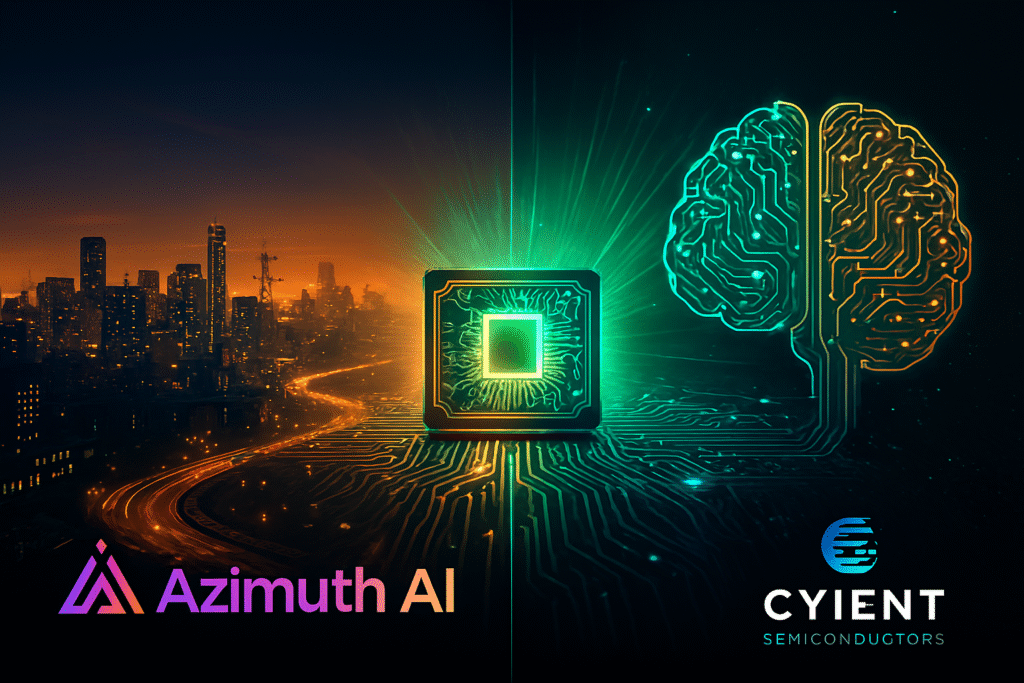
The potential applications are vast and transformative:
Smart Cities
It can power next-gen smart meters that analyze data in real time, optimizing energy usage and detecting anomalies. E.g., Intelligent traffic management systems that analyze vehicle flow in real time to optimize signals and reduce congestion.
Battery Management Systems (BMS)
For electric vehicles or grid-scale storage, an efficient BMS is vital. This chip’s power management and sensing capabilities are well-suited for managing charge, temperature, and health of batteries.
Smart Cities
Whether it’s intelligent street lighting, predictive maintenance, or industrial IoT devices, ARKA GKT-1 can drive localized decision-making, reducing latency and reliance on central cloud.
Industrial Automation
Factory robots with enhanced vision and decision-making capabilities for quality control and assembly lines.
Agriculture
Soil and crop monitoring sensors that can detect disease or pest infestations early and trigger localized responses.
Healthcare
Portable diagnostic devices that can run complex analysis at the point of care, even in remote locations with limited connectivity.
Challenges, Gaps, and What Lies Ahead
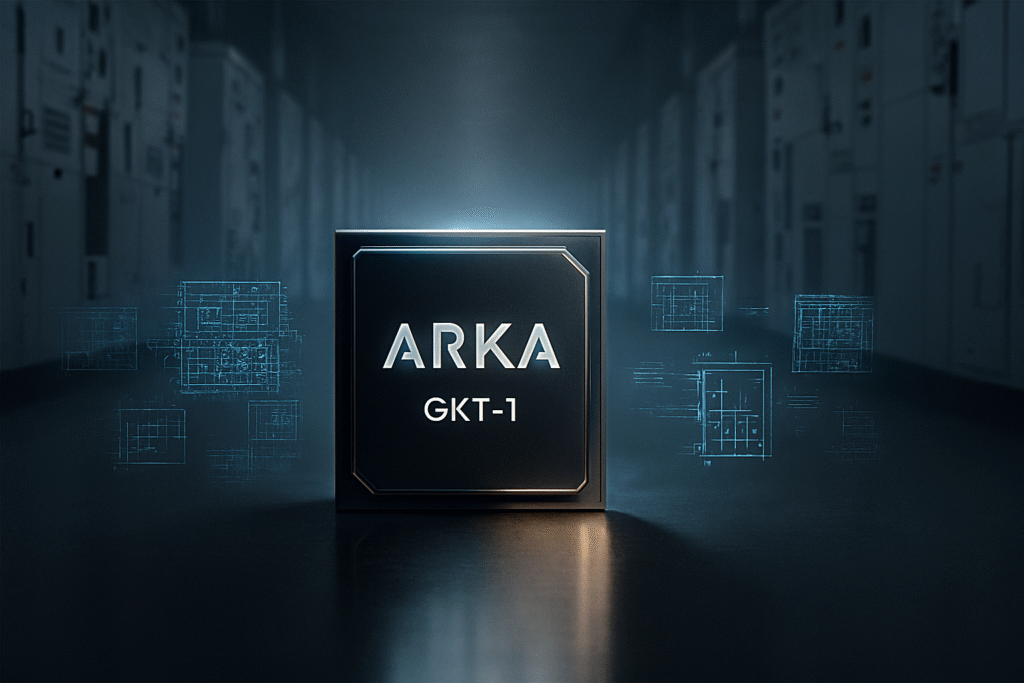
Technical clarity is still evolving
Detailed benchmarks, real power consumption numbers, thermal characteristics, and full architectural disclosures are not public yet. This limits early comparisons with established global chips. The technology node is also unconfirmed, although many believe it uses a mature node like 40nm, which is common in energy and industrial applications because it is cost-effective and stable. As more devices enter testing, these figures should become clearer.
Manufacturing remains overseas
The design and IP sit in India, but the fabrication does not. India’s domestic foundry ecosystem is still taking shape, which means early batches depend on foreign fabs. It is a practical choice today, but long-term, true self-reliance will require local manufacturing partnerships or national-scale fabs.
Time to commercial rollout
Cyient expects commercial production between mid and late 2026. For a custom ASIC, this pace is solid, but the challenge begins after production. Scaling volumes, ensuring quality across batches, and managing supply chain risks will determine whether the chip can support large utility deployments or widespread IoT adoption.
Early adopter hesitation
Utilities, EV companies, and industrial automation providers are usually conservative. They want proven reliability before committing to new silicon. Convincing them to move from established global players to a first-generation Indian platform will require strong demonstrations, pilot programs, and long-term support commitments.
Crowded global market
Edge AI and power-efficient silicon are a competitive space. Companies in the United States, Europe, and East Asia already offer highly optimized chips with years of refinement. ARKA GKT-1 must find its niche by being price-friendly, energy efficient, and reliable in real-world environments like harsh industrial sites or fluctuating utility conditions.
Scaling the ecosystem around the chip
Success is not only about silicon. Developers, integrators, and device manufacturers need software tools, libraries, reference designs, and documentation. Building this ecosystem will be just as important as the chip itself.
Future upgrade path
As a first-generation platform, ARKA GKT-1 sets the groundwork but does not represent the final vision. Later versions could bring more compute cores, stronger AI acceleration, improved analog performance, deeper security features, or tighter integration between sensing and machine learning. The roadmap will determine how competitive India can be over the next decade.
Recommended Reading
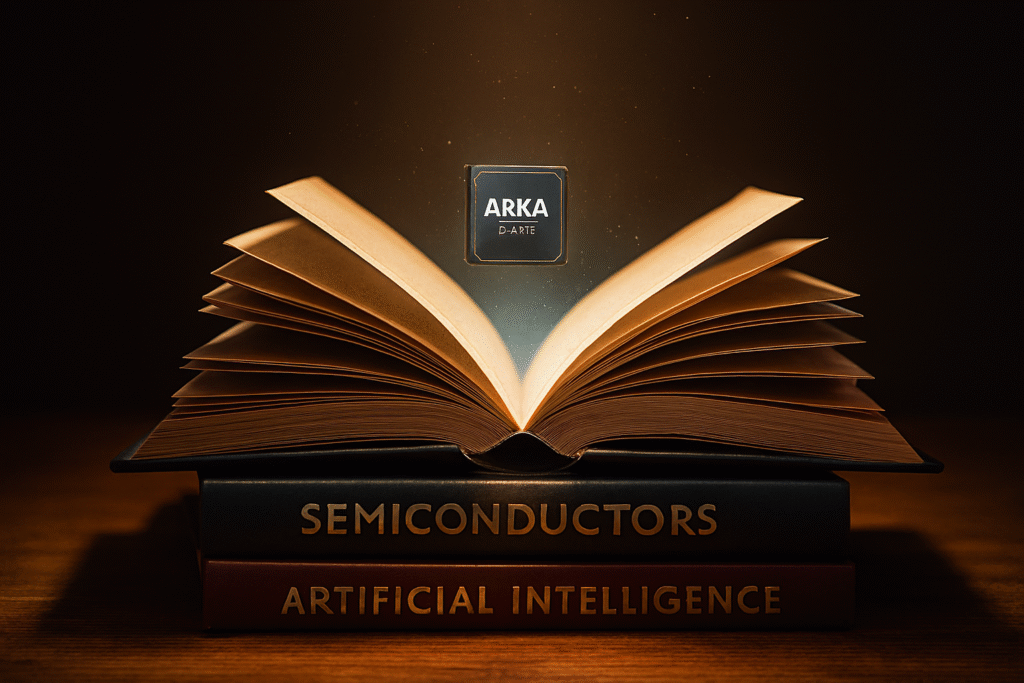
To learn more about the fascinating world of semiconductors and the technology shaping our future, consider these books:
- “Chip War: The Fight for the World’s Most Critical Technology” by Chris Miller: A riveting account of the global history and high-stakes geopolitics of the semiconductor industry.
- “The Master Switch: The Rise and Fall of Information Empires” by Tim Wu: While broader than just chips, this book provides essential context on how control over foundational technologies shapes our world.
- “The Innovators: How a Group of Hackers, Geniuses, and Geeks Created the Digital Revolution” by Walter Isaacson: A comprehensive history of the people and inventions, from Ada Lovelace to the silicon transistor, that made modern computing possible.
Frequently Asked Questions (FAQ)

Q1: Who developed the ARKA GKT-1 chip?
A: It was developed collaboratively by Azimuth AI and Cyient Semiconductors. Azimuth AI led the architecture, with Cyient Semiconductors handling design, verification, and turnkey production support.
Q2: When will this chip be commercially available?
A: Commercial applications are expected by the middle to latter half of 2026, according to Cyient.
Q3. What does “intelligent power” mean in this context?
A: “Intelligent power” refers to the chip’s integrated capabilities for dynamically and efficiently managing its own power consumption, as well as controlling external power systems like battery packs or smart grids. This is crucial for energy conservation and extended battery life in IoT devices.
Q4. How does this chip support “Make in India”?
A: The chip’s design and development being achieved domestically represents a major step towards self-reliance in the critical semiconductor sector, reducing dependence on imports for advanced silicon solutions, and strengthening India’s own technology value chain.
Q5: Is this chip comparable to the processors in our smartphones or laptops?
A: Not directly. The ARKA GKT-1 is a specialized chip designed for “edge” devices like smart sensors and industrial equipment. It prioritizes power efficiency and integrated AI processing over raw, general-purpose computing power.
Q6: What does “edge computing” mean?
A: Edge computing refers to processing data on or near the device where it is generated, instead of sending it to a centralized data center far away. This reduces latency, saves bandwidth, and allows devices to function even without an internet connection.
Q7: What is an NPU and why is it important?
A: An NPU, or Neural Processing Unit, is a dedicated part of the chip designed specifically to accelerate artificial intelligence and machine learning tasks. It makes running AI models on a local device fast and efficient, which is crucial for real-time applications.
Q8: What markets is it targeting?
A: Primarily smart utilities, battery management systems, industrial automation, smart cities, and edge applications in the energy sector.
Q9: Does India now manufacture its own chips?
A: The ARKA GKT-1 is a major achievement in chip design. The physical manufacturing (fabrication) of semiconductors is a separate, highly complex process that currently happens in specialized foundries, mostly located outside India. This design milestone is a critical first step toward a fully integrated domestic semiconductor industry.
Conclusion: A Foundation for the Future

The ARKA GKT-1 is a powerful proof of concept, but it is likely just the beginning. The success of this first-generation chip will pave the way for more advanced versions, possibly utilizing smaller, more efficient manufacturing processes. The challenge now lies in scaling production and convincing device manufacturers to adopt this homegrown silicon.
However, the message is clear: India is not just a consumer of technology; it is a burgeoning creator. The ARKA GKT-1 is a bold and intelligent step into the high-stakes world of semiconductors, signaling that the country is ready to carve out its own space in the silicon frontier.

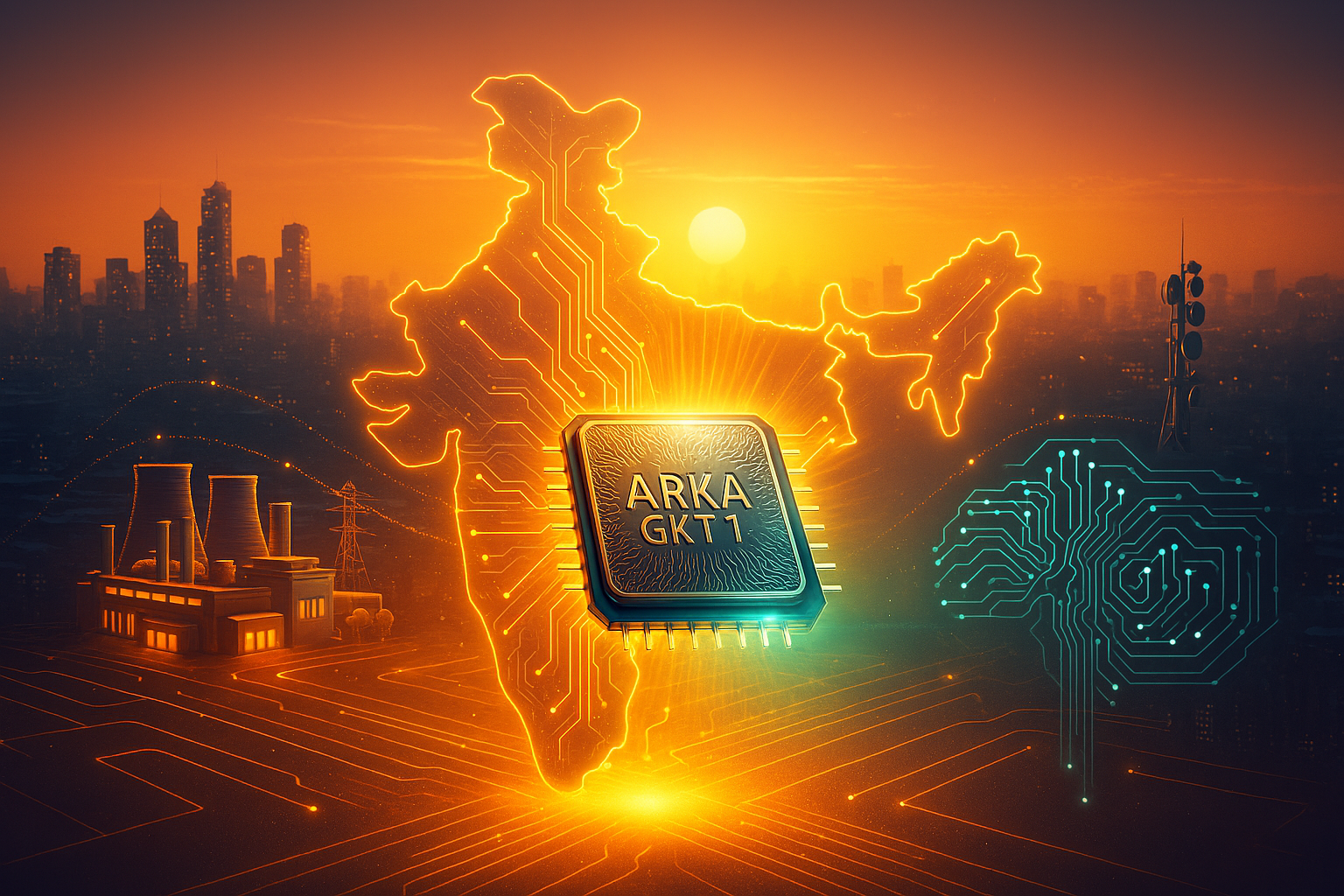







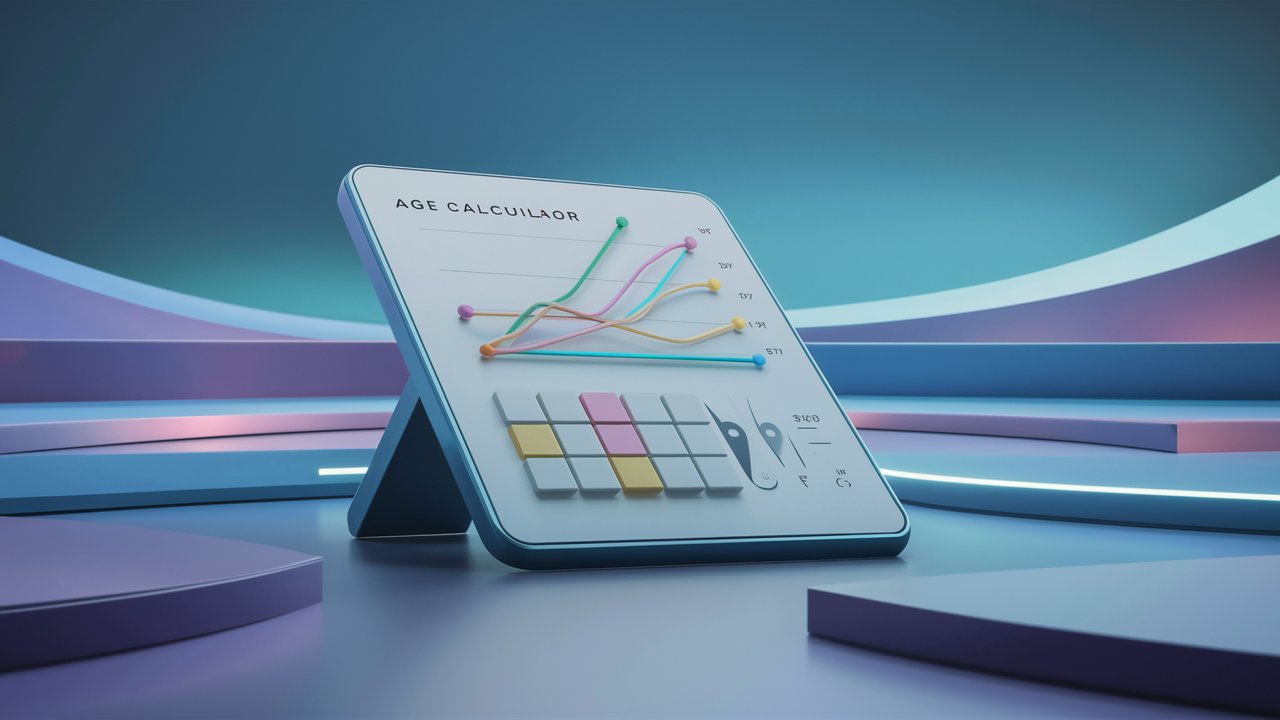

Leave a Reply